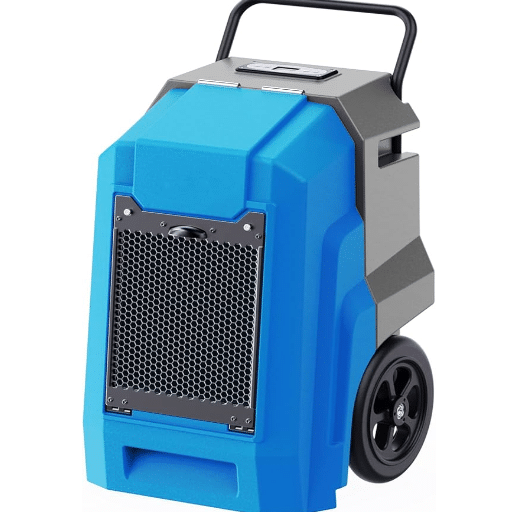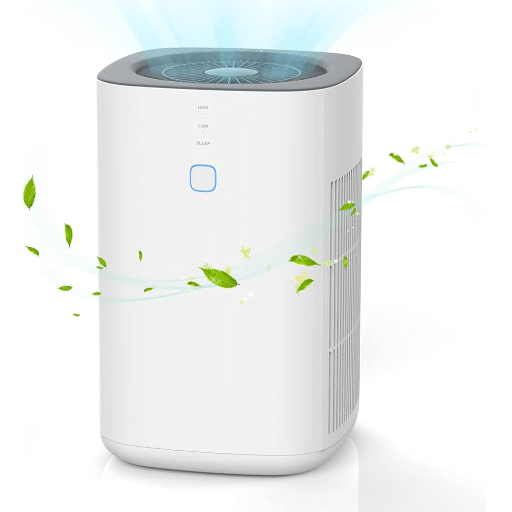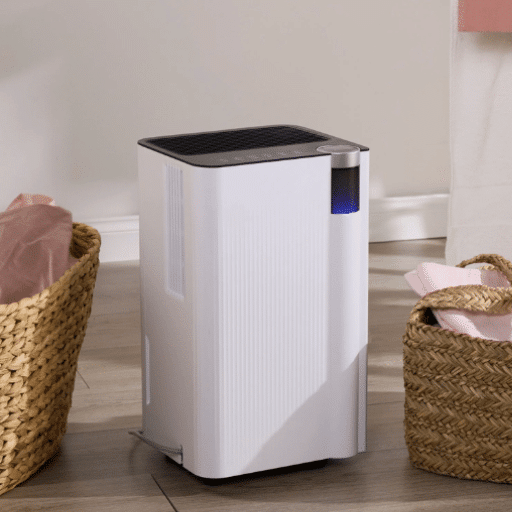To ensure the air quality in your home remains uncontaminated and the living conditions comfortable, it is important to choose a dehumidifier with the appropriate size. Damp stains, mold growth, unpleasant smells, and mildew can occur if high humidity levels go unaddressed. The right dehumidifier will mitigate these issues. In this article, you will learn the fundamentals of how a dehumidifier functions, the reasons why dimensions are essential, what to check when selecting a dehumidifier, and more. This article is tailored to help you assess the sqft of your space alongside the severity of the humidity problem so that you can make an effective purchasing decision. By following the guidance in this article, you will be equipped with the insights required to aptly select the device that meets your exact requirements.
How Does a Dehumidifier Work?

A dehumidifier assists in reducing the level of humidity in a room or other enclosed space by removing excessive moisture from the air. The device uses a fan to take in a certain volume of air which is then passed over cooled coils. The moisture-free air is released to the room and the moisture is condensed into water. The water collected is either stored in a tank, depending on the model, or drained automatically. Apart from making the mitigated space comfortable, this process also takes care of high relative humidity issues by preventing mold growth and damage to furniture or walls.
Understanding the Functionality of a Dehumidifier
A dehumidifier helps control the indoor air quality, especially in hot and humid regions. This advancement not only improves comfort by making it more pleasant to breathe but also decreases the chances of respiratory disorders by removing unnecessary moisture. Dehumidifiers specifically assist in stopping the development of mold and mildew which flourish in humid environments, causing health complications, and structural damage, and by protecting furnishings, clothes, electronics, and other items from moisture-related damage. Modern dehumidifiers are designed to use less energy while containing configurable humidity, timers, and automatic shutoff features, increasing convenience for users.
How Dehumidifiers Use Technology to Remove Moisture
Dehumidifiers employ different methods to control the relative humidity in the air and to properly remove moisture. Refrigeration technology, which is used in the majority of dehumidifiers, works by drawing in humid air through a fan which is then passed over cold coils where the moisture condenses into water droplets. Water is then collected in a tank or can be drained through a hose. The remaining dry air is reheated and released back into the room. Alternatively, some dehumidifiers use desiccant technology where a moisture-absorbing material captures moisture from the air and is effective in colder environments.
Key specifications include:
- Capacity (measured in pints per day): Typically ranges from 20 to 70 pints, indicating how much moisture a unit can remove in 24 hours.
- Coverage Area (measured in square feet): Suitable for spaces ranging from small rooms (up to 300 sq. ft.) to large basements (1,500+ sq. ft.).
- Energy Efficiency: Look for models certified by Energy Star to ensure lower electricity consumption.
- Humidity Control (setpoint): Adjustable between 30%-80% relative humidity, allowing users to maintain desired levels.
- Operating Temperature: Refrigerant models perform best above 41°F (5°C), while desiccant models can function effectively in lower temperatures.
These technologies and features ensure dehumidifiers are versatile and efficient in maintaining optimal indoor conditions, regardless of the environment.
Types of Dehumidifiers and Their Mechanisms
Dehumidifiers can be classified in two ways according to their functions: refrigerant dehumidifiers and desiccant dehumidifiers. Both types come with advantages based on the conditions presented:
- Refrigerant Dehumidifiers (Compressor-Based)
The condiment dehumidifier’s mode of operation is quite common, it works by refrigerating a particular air condensing unit. The warm humid air contains a lot of moisture, when passed over the cold coils a copious amount condenses into water. This water is collected and removed. Refrigerant models are highly effective in warm climates and moderate humidity levels, making them ideal for homes, basements, and offices. However, during the winter months, their performance dips in colder coiled environments as atmospheric temperature and pressure drop the rate at which water vapor can condense greatly.
- Desiccant Dehumidifiers
Desiccant models employ a hygroscopic substance to extract moisture from the air. The desiccant is then regenerated by heating enabling the process to persist. These dehumidifiers work well for industrial refrigerator context use as they provide low temperatures, keeping the humidity maintained at critical low levels. They also do not produce a lot of sound at work which makes them perfect for places that need quiet.
- Thermoelectric Dehumidifiers (Peltier Technology)
Thermoelectric dehumidifiers, also known as semiconductor dehumidifiers, utilize a Peltier device that cools one side of the heat sink, using a semiconductor, leading to moisture condensation. These models are more compact and energy efficient but are typically less useful for large areas or spaces with high humidity due to their lower operational capacity. Their best applications are in small confined spaces like closets or bathrooms.
Considering the available types of dehumidifiers, each possesses unique advantages that meet specific needs. The selection is a function of the setting’s temperature level and humidity. An informed choice enhances device reliability, performance, and energy efficiency when controlling indoor climate conditions.
Why Do You Need a Dehumidifier?
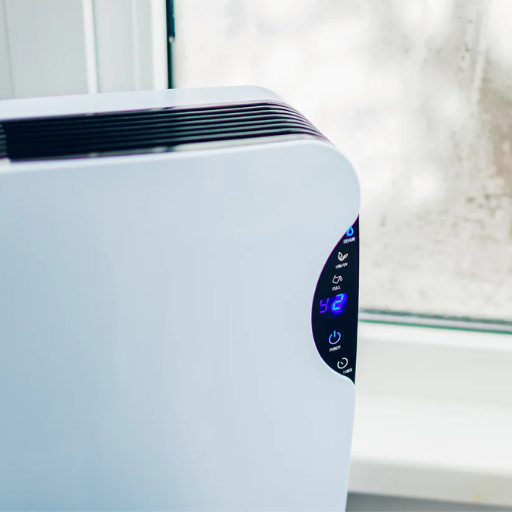
Indoor environments must be kept at a comfortable level of humidity which can be achieved by using a dehumidifier. This is important because excess moisture can give rise to mold, and dust mites and can worsen poor air quality resulting in extreme allergies or respiratory issues. A dehumidifier helps to control and reduce moisture in the air thereby protecting your home from structural hazards such as peeling paint and rotting wood. Moreover, with the elimination of mildew odors, spaces can be enhanced, especially in humid areas such as damp basements.
The Impact of High Humidity on Your Home
Excess indoor humidity can pose risks to a house and its occupants. Maintaining an indoor relative humidity ratio between 30 and 50 percent is ideal as exceeding the recommended levels can foster the growth of mold and dust mite allergens while encouraging the proliferation of mold. Physical effects of increased indoor humidity include warped wooden floors, swollen doors, peeling paint, and cosmetic issues. With time, drywall may disintegrate which can result in costly repairs.
Greater structural damage can occur with prolonged exposure to moisture. Sprayed paints and varnishes have a threshold moisture exposure limit beyond which a degree of damage becomes inevitable. Maintaining that sweet spot optimum moisture level of 30 and 50 provides enhanced thermal comfort and avoids damage to achieve better home protection.
Dehumidifiers can manage humidity guidelines where setting guarantees effective regulation. Most commercially available models advertise ranges capable of removing twenty to seventy pints of moisture within a single day, relative to the size of the room and climatic conditions, allowing for flexible control.
Controlling high levels of humidity is critical not only for sustaining a home’s structural integrity but also for preserving the health of the occupants. Adequate ventilation with the sealing of leaks, and getting a good dehumidifier can greatly improve the quality of living in a home.
Signs You Need a Dehumidifier in Your Space
- Persistent Musty Odors
If you notice a persistent musty smell in certain areas of your home, this could indicate that there is excess moisture and recommend using a dehumidifier.
- Visible Mold Growth
Finding mold or mildew on walls, ceilings, or other areas of the house is an unmistakable sign that the house has high moisture levels.
- Condensation on Windows or Walls
Regular condensation on glass surfaces is another indicator for high levels of humidity. A dehumidifier will be useful to eliminate this problem.
- Allergy or Respiratory Issues
Humidity can increase the growth of allergens such as dust mites and mold which will heighten the risks of allergy symptoms or breathing issues.
- Warped Wood or Peeling Paint
High levels of humidity can cause deformation of wooden furniture, floors, and doors. Paint or wallpaper will also begin to peel off and require control of humidity.
- Clammy or Uncomfortable Air
Indoor air that has a sticky or clammy feeling when touched, particularly during humid months, indicates the high probability of humidity levels and calls for a dehumidifier.
If these issues are dealt with on time, air quality will improve while safeguarding the house from damage and boosting comfort and convenience.
Protect Your Home from Water Damage and Mold
- Identify and Fix Leaks Promptly
Conduct leak checks of roofs, walls, plumbing systems, and appliances in your house systematically. Repairing leaks promptly prevents water from accumulating in a material’s pores where mold can grow.
- Ensure Proper Ventilation
Expel any excess moisture using exhaust fans in the kitchen, bathrooms, and laundry room. Open windows where possible as this will improve airflow and help reduce humidity levels.
- Maintain Gutters and Downspouts
Prevent water from pooling near the foundation of your house by cleaning the gutters regularly. Ensure the downspouts are aimed 5-10 feet away from your house.
- Use a Dehumidifier
In cases of too much humidity in the summer months, these will help ensure the humidity stays within 30-50%, and thus reducing the chances of mold growth.
- Remove Moisture From Surfaces Immediately
Elimination of standing water or wet surfaces will prevent the growth of breeding mold. This can be done using a wet/dry vacuum, fans, or towels.
- Inspect HVAC Systems
Scheduling maintenance for air conditioning units and changing the filters regularly helps prevent the buildup of dust and moisture which is a cause of mold buildup.
- Choose Mold-Resistant Materials
Use mold-resistant paints, drywall, and flooring, especially in moisture-rich regions like the basement and bathrooms.
Implementing these steps will help protect your house from water damage, but also mold-related health risks. For lasting protection, proactive maintenance and rapid response to moisture problems are key.
How to Choose the Right Size Dehumidifier
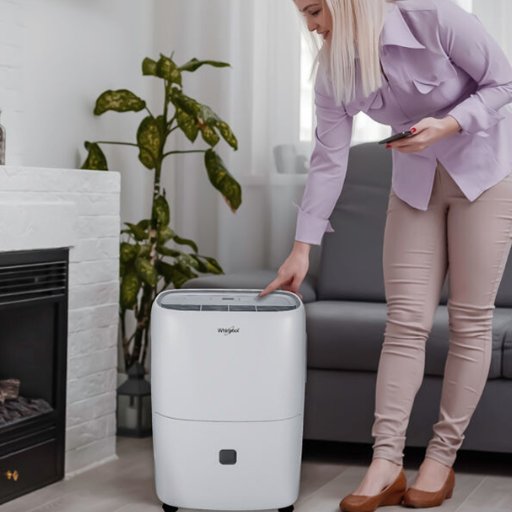
To choose the correct size of a dehumidifier, assess both the area that needs dehumidification and the humidity level. The capacity of a dehumidifier is usually rated in PPD (pints per day) of moisture extraction. A 20-30 PPD unit is appropriate for small rooms or areas with low moisture. For rooms or areas with moderate battering dampness, opt for a 40-70 PPD unit. For optimal effectiveness, the circulation in the room, temperature, moisture problems, and the presence of persistent moisture issues need to be considered too. Remember to check the manufacturer’s instructions to select the appropriate unit for the intended purpose.
Calculating the Size of Dehumidifier Needed for Your Space
To determine what size dehumidifier you need, first calculate the area of the space in square feet and consider how wet the space is. A small room (less than 300 sq. ft.) will require a dehumidifier unit with a capacity of 20-30 PPD. For severely damp or larger areas, a unit with a capacity of 40-70 PPD is recommended. Consider the room’s specific situations like low airflow, dampness, or temperature changes to further narrow the choice. Most manufacturers provide size charts/calculators which can be useful in determining the right unit for your space. Remember to account for the possibility of unexpected increases in humidity by selecting a unit with a slightly higher capacity.
Factors Influencing the Right Dehumidifier Size
Several factors influence the proper selection of a dehumidifier size:
- Room Size: The square footage of the space directly impacts the capacity required. For example:
- <300 sq. ft.: 20–30 PPD
- 300–500 sq. ft.: 30–50 PPD
- 500–800 sq. ft.: 50–70 PPD
- >800 sq. ft.: 70+ PPD
- Humidity Level: Higher relative humidity (above 60%) will require a larger capacity. For extremely damp areas, choose at least 50–70 PPD units, even for medium-sized rooms.
- Room Conditions:
- Persistent Dampness: Use a high-capacity unit (50+ PPD).
- Low Airflow: Choose units with built-in fans or air circulation features.
- Temperature Fluctuations: For spaces below 65°F, select models equipped with low-temperature operation or defrost capabilities.
- Climate: Consider the overall humidity of your region. For humid climates, it’s advisable to select a dehumidifier with a higher capacity than typically required.
Ensure you reference the manufacturer’s sizing chart for precise recommendations and always opt for slightly higher capacity if unsure. This ensures better performance and flexibility in managing unexpected humidity changes.
Whole-House vs. Portable Dehumidifiers
Coverage, installation, cost, and maintenance are all key factors to examine when deciding between a whole house versus a portable dehumidifier. Whole-house dehumidifiers are usually meant to work with your HVAC system. As such, they will offer consistent humidity control or regulation throughout the home. They are great for large areas, customized professional installation is a must, and as with most things, there is a tradeoff. They do tend to have a higher upfront cost but lower long-term maintenance costs because of their durability and centralized operation.
For smaller spaces or specific areas, portable dehumidifiers are the most versatile and economical. They do not require installation, can be easily moved around, and are generally cheaper upfront. Despite these advantages, portable dehumidifiers need more frequent maintenance—emptying the water tank on a routine, regular basis along with cleaning the unit, and have limited scope and therefore applicability for large-scale humidity control.
Your budget, desired convenience and efficiency, and amount of controllable space determine the best-suited dehumidifier for your needs. Whole-house systems are best for overarching solutions, while portable dehumidifiers offer the best flexibility for targeted management of humidity.
What Are the Benefits of Using a Dehumidifier in Your Home?
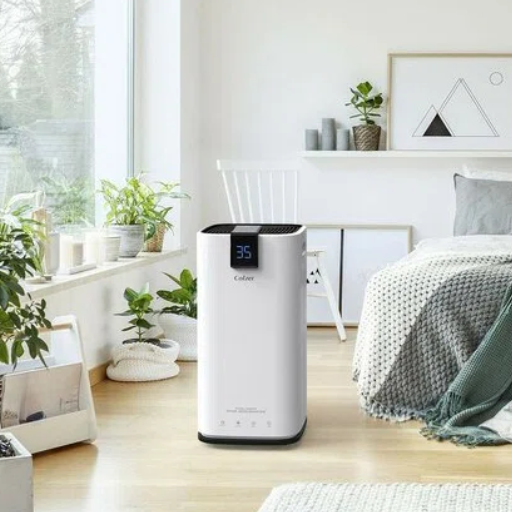
Many homeowners appreciate the many benefits that come with using a dehumidifier in the house. Reducing excess moisture prevents mold and mildew growth which can be harmful to your belongings and hazardous to your health. Lower humidity also improves air quality and helps mitigate allergies and respiratory problems caused by dust mites and mold spores. Dehumidifiers can also help wood furniture, floors, and other wooden structural components by protecting them from warping or deterioration. Additionally, it helps improve comfort by getting rid of stickiness associated with humid air, which may reduce the use of air conditioning and thus, lower energy bills.
Improving Indoor Air Quality with a Dehumidifier
To curb the humidity levels at home, a dehumidifier must first be set to remove excess moisture from the air. In turn, that makes the home less amenable to allergens that are in high humidity like dust mites and mold. With a dehumidifier, the optimal humidity can be set between 30-50%, thus keeping health complications and respiratory issues triggered by poor air quality at bay. Additionally, using a dehumidifier will help maintain furniture, walls, and floors by preventing them from sustaining moisture damage. Overall, a dehumidifier will also improve comfort levels in the house and even decrease the home’s energy expenditures due to lower reliance on air conditioning.
Reducing Allergens Like Dust Mites and Mold
To lessen allergens like dust mites and mold, it is necessary to control indoor humidity and deactivate their existing environments. An ideal environment for these allergens is between 30-50 percent relative humidity. To accomplish this, dehumidifiers, air conditioners, and proper ventilation can help. Dust surfaces with a damp cloth, vacuum using a HEPA filter to contain submicroscopic fragments, and wash beddings every week in hot water to exterminate dust mites. Curb mold growth by promptly repairing leaks, cleaning damp areas, and maintaining proper airflow in bathrooms and kitchens. Also, do not use wall-to-wall carpeting in moist regions, and use covers designed to block allergens for mattresses and pillows. All of these actions will collectively reduce allergens while simultaneously enhancing air quality indoors.
Preserving Your Home’s Structure and Furnishings
Caring for the structure and furnishings in your home takes a proactive approach to mitigating issues like moisture, pests, and general wear and tear. Water damage prevention should be a priority since it can weaken structural integrity and encourage mold. Conduct roof leak checks, routinely clear gutters to prevent water accumulation, verify proper drainage from the foundation, and check seal and stain on wood used for construction every few years to avoid warping and deterioration.
Another key element is pest management. Close gaps and spaces around windows, doors, and utility entrances, to block access for rodents and insects. Look for indications of wood-destroying pests such as termites in crawl spaces and basements, as neglecting pest solutions would severely compromise one’s home’s durability.
Other than cleaning, use curtains, window blinds, and films to effectively cover windows to protect furniture fabrics and wood from damage caused by UV rays, thus further prolonging their lifespan. To control humidity within the home, a hygrometer can be used to keep indoor levels between thirty and fifty percent. Controlling temperature and humidity at these levels prevents mold from growing and sensitive materials like wood from getting damaged. With these steps, along with routine inspection, the structural and visual composition of your home can be preserved for many years.
Should You Consider a Whole-House Dehumidifier?
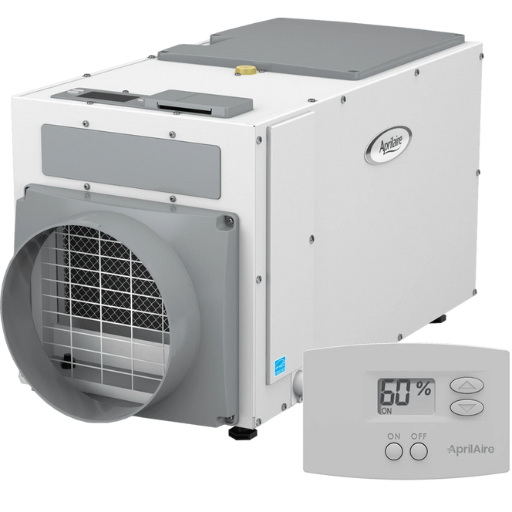
These devices can be very efficient if you live in an area with excessively humid or moist conditions as a whole-house dehumidifier is connected to the HVAC system in your house for all-room humidity control. Whole-house dehumidifiers are recommended for big homes and the integrated HVAC improves air quality while alleviating allergies caused by mold, dust mites and other particulates. They are also easier to maintain relative to portable dehumidifiers placed in various rooms. Even though the initial investment is higher than the portable units, the cost savings associated with energy usage and better home preservation justify this for most homeowners.
Advantages of a Whole-Home Dehumidifier System
- Improved Air Quality
Mold, mildew, and dust mites can thrive in moisture-rich environments. A whole-home dehumidifier minimizes excess moisture, and thus mold and mildew reduce allergies and smooth respiratory issues for the concerned individuals, promoting better living conditions.
- Enhanced Comfort
With the sticky, damp feeling gone, homes are more comfortable year-round. A whole-home dehumidifier helps maintain optimal humidity levels, allowing you to feel at ease in your home during any season.
- Energy Efficiency
A well-maintained balance between humidity levels allows an HVAC system to run optimally. A whole-home dehumidifier works effectively to maintain the humidity level, ensuring that expenditure on energy does not increase, making it cost-effective.
- Home Preservation
Controlled humidity helps protect the foundation, walls, and furniture of a home. Moisture leads to structural damage, timber warping, and paint chipping; a whole-home dehumidifier prolongs home life by preventing excess humidity.
- Little Effort
Whole-home dehumidifiers are installed once, and then for years, the user enjoys almost no upkeep other than changing filters from time to time. Occasional professional servicing guarantees easily maintained optimal functionality.
- Simple yet Effective
Unlike portable units advanced whole-home dehumidifiers require zero management of individual units as they integrate with the HVAC system, offering consistent control over humidity across rooms.
Comparing Costs: Dehumidifier Rental vs. Purchase
Guiding factors should be considered when deciding on renting or buying a dehumidifier. Renting is likely the best option when dealing with temporary situations such as moisture after water damage as it is cost effective. For short-term use, renting typically costs between $40-$60 per day, making it ideal for infrequent use.
Continuous control of moisture makes owning a dehumidifier more valuable; however, standard unit prices range from $150-$500 based on capacity and features with top-of-the-line models going over $1,000. Although the initial purchase is pricey, owning a unit provides no recurring rental costs while having access at all times. Customizability to suit the exact requirements of the space is also a perk along with included warranties that promise long-term reliability.
Your personal budget and needs will determine the best option for you. If you are dealing with short-term issues, economical renting is likely the best choice. Overall virgin value offered long-term or consistent moisture control makes purchasing a dehumidifier the better option.
Installation Tips for a Whole-House Dehumidifier
A dehumidifier for the entire house should only be installed after careful evaluation to maximize performance and efficiency. Here is a tip list that will help streamline the approach:
- Select an HVAC Location
Locate the dehumidifier next to your HVAC units placed in the basement, garage, or crawl spaces. Confirm that there is appropriate airflow as well as room to the main duct for uncomplicated access and integration.
- Integrate with HVAC
The ducting needs to be integrated properly which can be achieved by installing it into your home’s ductwork. Normally, this requires the installation of return air and supply ducts to direct airflow through the unit. For these precise connections, expert help is recommended.
- Drainage
A dehumidifier uses ducts to remove excess moisture from the air and should be connected to a floor drain or condensate pump. Confirm that the drainage line is sloped downward to prevent clogging.
- Electrical Wiring
Every unit is built differently so ensure that the power specifications for the unit have been carefully evaluated so that there is a need for circuit installation. Always comply with the regulations of the manufacturer or regulation documents and for security reasons, call a professional.
- Inspection and Cleaning
As soon the installation procedure is completed, the units should undergo testing right away to ensure they are functional. The units work optimally and last longer when the filters and drainage lines are cleaned on a repeated schedule, along with routine maintenance checkups.
To optimize results, it is advisable to use a licensed HVAC contractor to complete the installation since they will adhere to building codes as well as configure the system for your space.
References
Heating, ventilation, and air conditioning
Frequently Asked Questions (FAQ)
Q: How do I determine the right size dehumidifier for my home?
A: To choose a dehumidifier, you need to consider the humidity level and the size for your space. Measure the square footage of the area and consider the moisture level. Dehumidifiers are used to remove water from the air, and a larger dehumidifier may be needed for bigger spaces or higher humidity.
Q: What is the difference between a humidifier and a dehumidifier?
A: A humidifier adds moisture to the air, while a dehumidifier removes moisture. If the humidity in your home is too high, a dehumidifier may be necessary to improve air quality and comfort.
Q: How does a dehumidifier work?
A: Dehumidifiers work by drawing moist air over cold coils, which condenses the moisture into water that is collected in a tank. This process reduces the humidity in the air throughout the home.
Q: What features should I look for when purchasing a dehumidifier for my home?
A: When purchasing a dehumidifier, consider features such as a built-in humidistat to monitor humidity levels, the capacity to remove moisture, energy efficiency, and ease of maintenance. Some dehumidifiers are equipped with continuous drainage options.
Q: How often should I run the dehumidifier?
A: The frequency of running a dehumidifier depends on the humidity level inside your home. In areas with high moisture levels or where the home doesn’t have good airflow, you may need to run the dehumidifier more frequently.
Q: Can a dehumidifier help if my home has been affected by mold?
A: Yes, installing a dehumidifier can help reduce moisture levels and prevent further mold growth. However, it’s important to address the existing mold problem through proper cleaning and remediation.
Q: How do I maintain my dehumidifier?
A: Regular maintenance of a dehumidifier includes cleaning the filter, emptying the water collection tank, and ensuring the unit operates efficiently. Refer to the manufacturer’s instructions for specific maintenance guidelines.
Q: Is a larger dehumidifier always better?
A: Not necessarily. The size dehumidifier you need depends on the size of the space and the moisture level. A larger dehumidifier may consume more energy, so it’s important to choose a dehumidifier that matches your specific needs.

